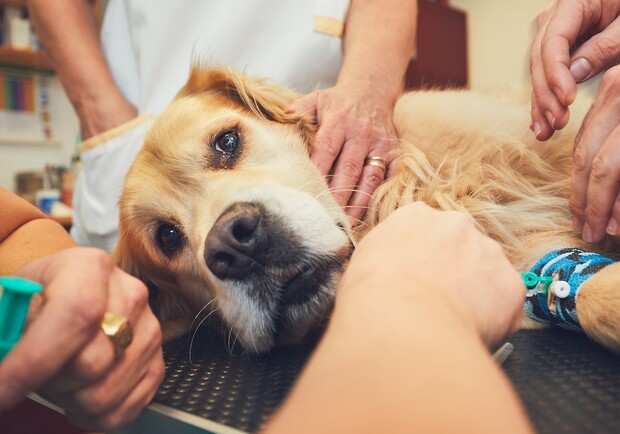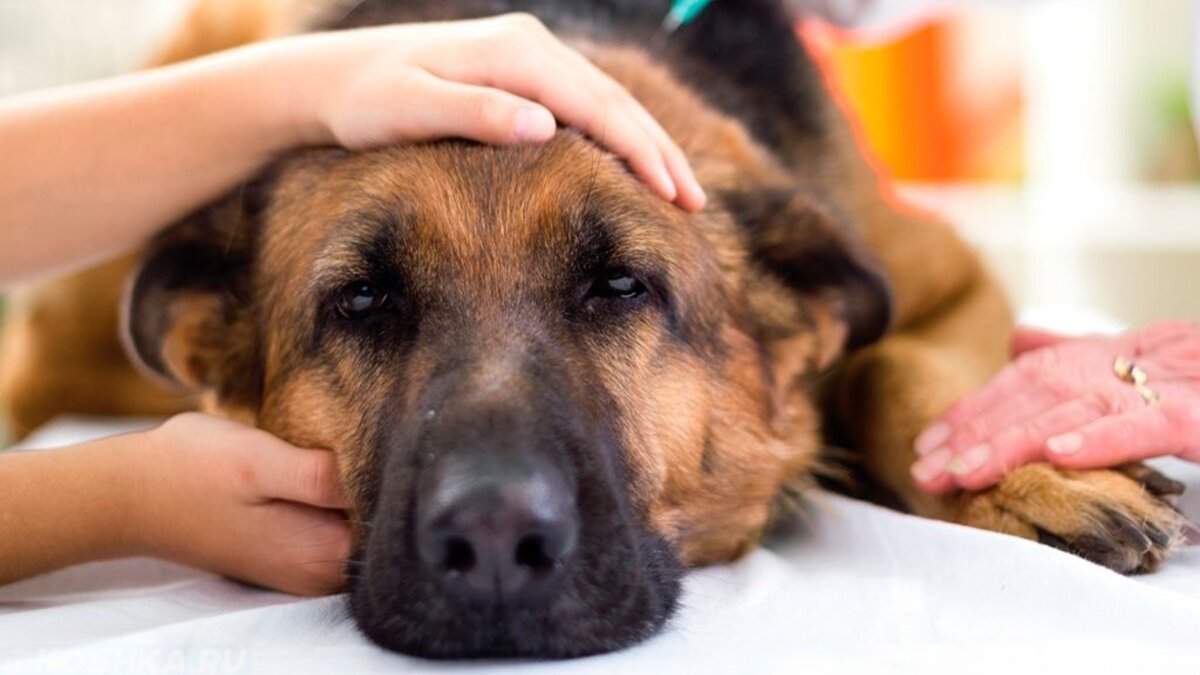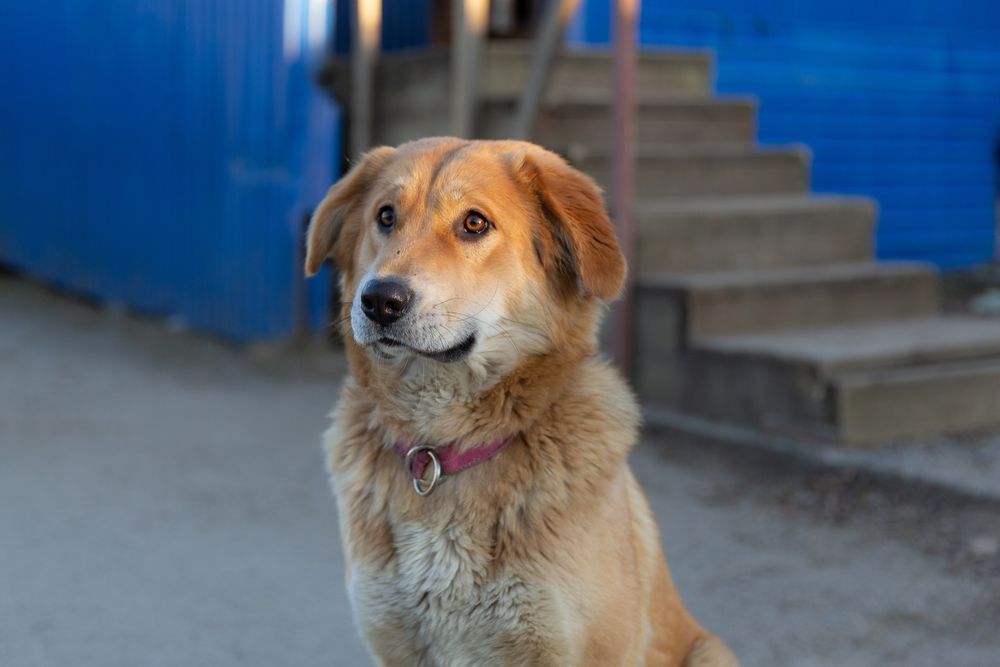A small accident or a bite injury can happen quickly. In an emergency, the right first aid measures for dogs can also save lives. In order to always be prepared for all eventualities, you should put together your own first aid kit for your dog. We have summarized for you what is particularly important for first aid with dogs.
Why dog first aid is so important

Every person who has a driver’s license has had to take a first aid course at some point in their life. The dog handler license does not yet require this qualification. Nevertheless, it can happen that the beloved four-legged friend is dependent on the help of his two-legged friend at some point. In this case, it is absolutely essential that the human being can provide the correct first aid to the dog.
The right first aid measures
Just like with people, first aid for dogs is carried out “on the spot”. Be it after a traffic accident, after the dog has eaten something poisonous or after being bitten by another dog: first aid for the dog must be quick and ideally carried out professionally. Typical emergency situations with the dog are:
- injuries
- poisoning
- burns
- hypothermia
- overheating
How to act in individual situations can be explained and taught to the dog owner by the veterinarian. There are also first aid courses for dog owners, which are offered by veterinary practices for first aid with dogs. In these courses you learn above all that before first aid can be given, it must be ensured that self-protection and the protection of the persons involved are given. An injured dog is in shock, scared, and in pain. This can mean that the dog, which is otherwise so dear, suddenly bites and perceives its surroundings as hostile.
What should be in a dog first aid kit?

A dog first aid kit should contain both medication and bandages. Important medications include, for example, wound disinfectants, petroleum jelly, or a sterile saline solution. The dressing material should include bandages of various types, such as mul bandages, tweezers, and compresses.
First aid for the dog: Recognize a dangerous situation in good time
It is better than having to provide first aid to the dog to recognize a dangerous situation in advance and thus prevent possible injuries or other restrictions. There are some criteria that can be used to assess the health of the animal. These include the body temperature, the mucous membranes, the pulse/heartbeat, breathing, the pupil and eyelid reflex, and bowel movements. Those who monitor these criteria regularly will prevent many diseases. Nevertheless, sometimes unforeseeable emergencies can occur.
If the dog has been injured or needs human help for any other reason, then the animal must always be approached slowly and calmly. The best preparation for an emergency is
- have the telephone number of the veterinarian/animal clinic ready
- inform the contact person immediately
- Put on a snout band/muzzle
The correct examination of the animal and the examination of wounds, as well as the correct transport to the vet, should then only take place in the second step. This procedure depends on the nature of the injury/incident.
Immediate help in an emergency

Professional first aid is crucial for the further healing process of the dog. For this, pet owners can, for example, access the online veterinarian Dr. Trust SAM, whose veterinarians will help the dog owner on the spot via phone and video chat. At the moment there is an action in which you can use the service of Dr. SAM can be tested free of charge for one month. The veterinarians are available daily between 8 a.m. and midnight and will answer all veterinary questions. This enables fast and competent advice – 7 days a week, 365 days a year.
Which first aid has to be given to the dog depends on the type of incident.
Poisoning
The remains of the eaten should be taken to the doctor. The dog should only be made to vomit under veterinary direction.
Injury
Check awareness
Control bleeding
Check limbs
Bring the dog into the stable side position and wait for help.
Heatstroke
Put the dog in the shade and slowly cool it down with wet towels. Start at the paws and slowly work your way up.
The emergency pharmacy for first aid for dogs
The right equipment when going for a walk and also at home is decisive for how well your own four-legged friend can be helped with a problem. For this, every dog owner should have an emergency first-aid kit and, ideally, a travel first-aid kit that they can always carry with them. This should be filled with the right medication and utensils, the durability and condition of which is checked regularly.
Medication
You should have a small supply of medication just in case. Electrolytes can help with gastrointestinal diseases to quickly restore your dog’s electrolyte balance. Charcoal tablets also help against diarrhea. Make sure you store them in a cool, dry place. It is best to check them regularly in case the best-before date is about to expire. Then you should exchange them.
Essential medication checklist:
- Vaseline
- Disinfectant wound ointment
- Cooling ointment against insect bites
- Wound disinfectant
- Sterile saline solution
- Ointment wound spray
- Calcium drinking ampoules
- Medicinal paraffin oil
- Utensils and bandages
Minor injuries, like a torn-out claw, can happen very quickly. So that you are optimally prepared, you should always have bandages, cotton wool, compresses, and self-adhesive bandage material. These must always be in sterile packaging if they come into contact with open wounds.

A disinfectant for wounds is important for the initial treatment of injuries since germs can get into the wound and this can lead to inflammation. In order to avoid contamination of wounds, you should definitely wear gloves when caring for your dog. After first aid, you should still visit a veterinarian who will take a close look at the wound.
Checklist for important utensils:
- bandages in the form of bandages of various types (mule bandages, elastic bandages, adhesive support bandages)
- compresses
- bandage cotton
- pavement
- bandage scissors
- small curved scissors
- tweezers
- thermometer
- razor
- syringes
- tongs
- cotton swab
- tongue depressor
- muzzle
With the help of these utensils and medicines, the animal can be helped quickly in an emergency. Nevertheless, it is helpful for dog owners to refresh their knowledge by regularly attending first aid courses from trained staff in order to be able to continue to meet the requirements.





























